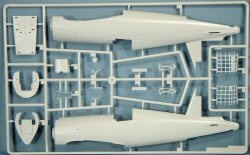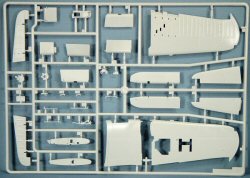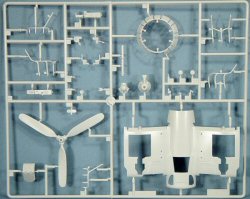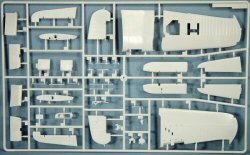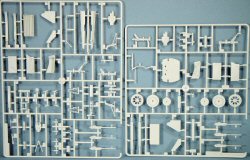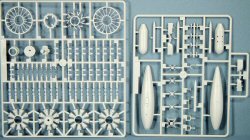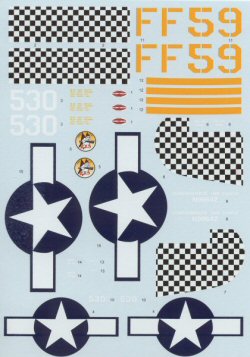Trumpeter 1/32
Vought F4U-1D Corsair | 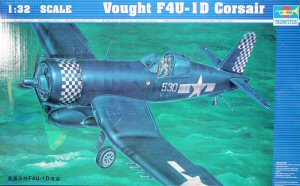 | Background The first F4U Corsairs were developed in the late 1930s which featured the visually unique gull wing design. This was the result of an engineering trade-off to provide the longest propeller and the shortest practical landing gear strut. For carrier landings, the longer the strut, the heavier and more vulnerable the gear is to impact stresses. Nevertheless, the F4U packed a huge engine under that long nose and the only way to translate all of that horsepower into thrust was by turning as large a propeller as possible. To provide the greatest ground-handling stability, the landing gear had to be spaced as far apart as practical. These requirements summed together yielded the now familiar gull wing design that, in turn, translated into a tough aircraft that would not only see combat through the end of WW2, but also serve on the front lines during the early years of the Korean War. The Kit As with most Trumpeter kits, on opening the box you are instantly taken with all of the parts inside. Trumpeter kits do not lack for detail, and this release is no exception. Molded in light gray styrene, the F4U-1D kit features beautifully scribed details and some interesting, if not overstated, representations of the fabric portions of the airframe. There are nine trees of gray parts as well as a tree of clear parts for the canopy and clear lenses. Rubber tires also are included for the landing gear. As with the F4F-4 kit also reviewed in this issue, the F4U-1D benefits from a design change in Trumpeter’s molding process. The cockpit sidewall framing and other details are now molded as separate pieces, which reduces the number of ejector pins needed to get the tree off the molds, which in turn significantly reduces the number of pin marks that you will need to correct. Most importantly, you won’t have the frustration of destroying sidewall detail while dealing with any pin marks. Major kudos to Trumpeter for these changes! The kit features folding wings along with the now-familiar photo-etched control surface hinges. Inside these wings are some nicely done gun bays that can be displayed open. The engine is another work of art, though for some reason Trumpeter didn’t include a clear cowling as it did with other releases. The open cowl flaps will help to show off some of that engine detail. The only problems I could find with this kit are the cockpit floor (other than the pilot’s foot rails, there shouldn’t be one) and the missing horizontal frames on the canopy. In the case of the cockpit, a little surgery will take care of the problem, though I dry-fit the Black Box F4U cockpit for the Revell kit inside the fuselage and this appears to be a relatively easy adaptation. As for the canopy, I’ll simply mask the frames off and paint them where they’re supposed to be. Nobody will notice the difference. Speaking of the Revell kit, I pulled out my copy when I decided to test-fit the Black Box cockpit and took a look at the difference between the two kits. I found no discrepancies in the wings nor tail surfaces (not pictured). The fuselage halves align quite nicely with only a slight difference in position of the cockpit opening. I believe that any of the aftermarket products for the Revell F4U should work with the Trumpeter kit as well! Conclusion This is a beautiful kit of the F4U-1D and I see that Trumpeter has an F4U-4 on the schedule as well. I have no doubt that the aftermarket crowd will start supporting these kits though, as I said earlier, most of the aftermarket items for the Revell kit should work here as well. This kit is definitely recommended! My sincere thanks to Stevens International for this review sample! | 








|

